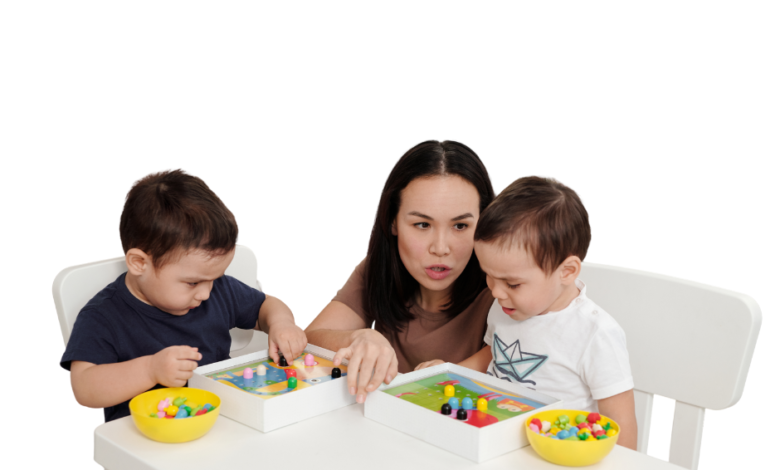Constipation in children : what parents need to know.
Helping Your Child Poop: A Parent's Guide to Managing Constipation

Constipation in children: Age-Specific Symptoms
Newborns and Infants:
Question: How many wet diapers per day? Any straining or discomfort with bowel movements?
Wet Diapers:
- First Few Days: In the first few days of life, a newborn may only have a few wet diapers as they start feeding.
- Increasing Output: By day 4 or 5, a breastfed baby should have at least 6 wet diapers in 24 hours. Formula-fed babies may have slightly fewer.
- What to Look For: The urine should be pale yellow or clear. Darker urine can be a sign of dehydration.
Bowel Movements:
- Meconium: The first few stools will be meconium, a dark, sticky substance.
- Transition: Over the next few days, the stools will transition to a lighter color and become looser.
- Frequency:
- Breastfed Babies: The frequency of bowel movements in breastfed babies can vary widely. Some may have a bowel movement after every feeding, while others may go several days without one. This is normal as long as the stools are soft.
- Formula-Fed Babies: Formula-fed babies tend to have more regular bowel movements, usually at least once a day.
- Consistency: The stools should be soft and loose, like peanut butter or mustard. Hard, pebble-like stools are a sign of constipation.
Straining and Discomfort:
- Straining is Normal: It’s normal for babies to strain or grunt when having a bowel movement. This is because their abdominal muscles are still developing.
- When to Worry: If your baby is straining excessively, crying in pain, or has hard stools, they may be constipated.
Toddlers and Preschoolers:
Question: Are they withholding stool? Do they have accidents (encopresis)?
Stool Withholding:
- What it is: Stool withholding is when a child intentionally holds back their bowel movements.
- Why it happens:
- Painful past experience: A previous painful bowel movement can make a child afraid to go again.
- Toilet training anxiety: Stress or pressure during toilet training can lead to withholding.
- Not wanting to interrupt play: Children may be so engrossed in play that they don’t want to stop to use the bathroom.
- Control and independence: Withholding can be a way for children to assert control.
- Signs of stool withholding:
- Avoiding the toilet
- Crossing their legs or clenching their buttocks
- Rocking back and forth
- Hiding in corners
- Becoming irritable or fussy
Encopresis:
- What it is: Encopresis is the repeated passing of stool in inappropriate places (such as clothing or the floor) in a child who is past the age of expected bowel control (usually age 4).
- How it relates to withholding: Stool withholding can lead to encopresis. When a child withholds stool, the rectum stretches and loses its sensitivity. Liquid stool can then leak around the hardened stool, leading to accidents.
- Not intentional: It’s important to understand that encopresis is not intentional. The child is not doing it on purpose.
What Parents Can Do:
- Address Constipation: If constipation is the underlying cause of withholding, work with your child’s doctor to treat it. This may involve dietary changes, increased fluids, or medication.
- Create a Positive Toileting Routine: Establish a regular toilet routine, such as after meals. Make it a relaxed and positive experience.
- Avoid Punishment: Do not punish or scold your child for accidents. This can worsen the problem.
- Offer Praise and Encouragement: Praise and encourage your child for any efforts to use the toilet.
- Talk to Your Child: Talk to your child about their fears or concerns about using the toilet.
- Seek Professional Help: If the problem persists, seek help from your child’s doctor or a child psychologist.
School-Aged Children:
Question: Are they avoiding using the bathroom at school? Any complaints of stomach aches or pain with bowel movements?
Avoiding Using the Bathroom at School:
- Reasons for Avoidance:
- Uncomfortable environment: School bathrooms may be perceived as dirty, smelly, or lacking privacy.
- Fear of bullying or teasing: Children may worry about being teased or bullied in the bathroom.
- Time constraints: Children may feel they don’t have enough time to use the bathroom between classes or during lunch.
- School policies: Some schools may have strict bathroom policies that limit when students can use the restroom.
- Consequences of Avoidance:
- Constipation: Regularly holding back bowel movements can lead to constipation.
- Accidents (encopresis): In some cases, withholding stool can lead to accidents.
- Urinary tract infections (UTIs): Holding urine for too long can increase the risk of UTIs.
- Abdominal pain and discomfort: Holding stool or urine can cause stomachaches and discomfort.
Complaints of Stomachaches or Pain with Bowel Movements:
- Stomachaches: Children may complain of stomachaches due to constipation or holding back bowel movements.
- Pain with Bowel Movements: Hard stools can cause pain and discomfort during bowel movements.
What Parents Can Do:
- Talk to Your Child: Talk to your child about their concerns about using the bathroom at school. Listen to their concerns and offer support.
- Communicate with the School: Talk to your child’s teacher or school administration about bathroom conditions and policies. Advocate for clean, safe, and accessible restrooms.
- Encourage Regular Bathroom Habits: Encourage your child to use the bathroom at home before and after school.
- Promote Healthy Diet and Lifestyle: Ensure your child is eating a high-fiber diet, drinking plenty of fluids, and getting regular exercise.
- Address Underlying Anxiety: If your child has significant anxiety about using the bathroom at school, consider seeking help from a child psychologist or counselor.
Dietary Habits:
Question: Are they drinking enough fluids (water, milk)?
Fluid Recommendations by Age:
- Infants (0-6 months): Breast milk or formula is sufficient. Do not give water to infants under 6 months unless specifically advised by a doctor.
- Infants (6-12 months): Offer small amounts of water in addition to breast milk or formula, especially as they start eating solid foods.
- Toddlers (1-3 years): Aim for about 4 cups (32 ounces) of fluids per day, including water, milk, and small amounts of 100% fruit juice.
- Preschoolers (3-5 years): Aim for about 5 cups (40 ounces) of fluids per day.
- School-aged children (5-8 years): Aim for 5 cups (40 ounces) of fluids per day.
- Older children (9+ years): Aim for 7-8 cups (56-64 ounces) of fluids per day.
Tips for Increasing Fluid Intake:
- Offer water frequently: Keep a water bottle readily available throughout the day.
- Make it fun: Use fun cups or straws. Add fruit slices to water for flavor.
- Offer fluids with meals and snacks: This helps establish a routine.
- Limit sugary drinks: Sugary drinks can contribute to dehydration and other health problems.
- Be mindful of weather and activity: Children need more fluids when it’s hot or when they are physically active.
Signs of Dehydration:
- Decreased urination: Fewer wet diapers in infants or less frequent trips to the bathroom in older children.
- Dark yellow urine: Urine should be pale yellow or clear.
- Dry mouth and lips:
- Lack of tears when crying:
- Lethargy or decreased activity:
Question: How much fiber is in their diet (fruits, vegetables, whole grains)?
Why Fiber is Important for Children:
- Promotes Regular Bowel Movements: Fiber adds bulk to the stool, making it easier to pass and preventing constipation.
- Supports Digestive Health: Fiber helps maintain a healthy digestive system.
- May Help with Weight Management: High-fiber foods can help children feel full and satisfied, which can help with weight management.
Recommended Daily Fiber Intake for Children:
There are a couple of ways to estimate how much fiber your child needs:
- “Age plus 5” rule: A simple way to estimate is to add 5 to your child’s age. For example, a 5-year-old would need approximately 10 grams of fiber per day (5 + 5 = 10).
- More specific recommendations:
- 1-3 years: 19 grams of fiber per day
- 4-8 years: 25 grams of fiber per day
- 9-13 years (girls): 26 grams of fiber per day
- 9-13 years (boys): 31 grams of fiber per day
- 14-18 years (girls): 26 grams of fiber per day
- 14-18 years (boys): 38 grams of fiber per day
Good Sources of Fiber:
- Fruits: Apples (with skin), bananas, berries, oranges, pears, peaches
- Vegetables: Broccoli, carrots, green beans, peas, sweet potatoes
- Whole Grains: Whole-wheat bread, brown rice, oatmeal, whole-grain cereals
Tips for Increasing Fiber Intake:
- Start gradually: Increase fiber intake slowly to avoid gas and bloating.
- Offer a variety of fiber-rich foods: This ensures your child gets a range of nutrients.
- Make it fun: Offer fruits and vegetables as snacks with dips, add berries to cereal or yogurt, or make smoothies.
- Choose whole grains: Opt for whole-wheat bread, brown rice, and whole-grain cereals instead of refined grains.
- Read food labels: Check the fiber content on food labels and choose products with higher fiber content.
Question: Do they consume a lot of constipating foods (dairy, processed foods)?
Dairy:
- Lactose Intolerance: Some children have difficulty digesting lactose, the sugar found in milk and other dairy products. This can lead to digestive issues, including constipation.
- High Fat Content: Dairy products, especially those with high fat content (like whole milk and cheese), can slow down digestion and contribute to constipation.
- Low Fiber: Dairy products are generally low in fiber, which is essential for promoting regular bowel movements.
Processed Foods:
- Low Fiber Content: Processed foods are often stripped of their natural fiber content. This lack of fiber can make stools harder and more difficult to pass.
- High Fat Content: Many processed foods are high in unhealthy fats, which can slow down digestion.
- High Sugar Content: Some processed foods are high in sugar, which can draw water out of the intestines and contribute to dehydration, further worsening constipation.
- Additives and Preservatives: Some additives and preservatives found in processed foods may also contribute to digestive issues.
Examples of Constipating Foods:
- Dairy: Milk, cheese, yogurt (in large quantities)
- Processed foods: Fast food, chips, cookies, cakes, white bread, white rice, processed meats, sugary drinks
Toilet Training:
Question: When did toilet training begin?
- Readiness Varies: There’s no single “right” age to start toilet training. Children develop at different rates.
- Most Common Range: Most children show signs of readiness between 18 months and 3 years old.
- Average Age: The average age for starting toilet training is around 27 months.
Signs of Readiness:
It’s important to look for signs that your child is physically and emotionally ready for toilet training, rather than focusing on a specific age. These signs include:
- Physical Readiness:
- Staying dry for longer periods (at least 2 hours)
- Having regular and predictable bowel movements
- Having the gross motor skills to walk to the toilet and sit on it
- Having the fine motor skills to pull pants up and down
- Cognitive Readiness:
- Showing an interest in the toilet or potty
- Understanding simple instructions
- Being able to communicate when they need to go
- Emotional Readiness:
- Showing a desire to be like older siblings or adults
- Being cooperative and willing to try new things
How Toilet Training Relates to Constipation:
- Early or Forced Training: Starting toilet training too early or putting too much pressure on a child can lead to anxiety and withholding of stool, which can contribute to constipation.
- Negative Experiences: If a child has a painful bowel movement during toilet training, they may associate the toilet with pain and start withholding stool.
- Disruptions in Routine: Changes in routine or stressful events during toilet training can also disrupt bowel habits and lead to constipation.
Question: Was there any stress or difficulty associated with toilet training?
- Anxiety and Fear: If a child experiences stress, pressure, or negative emotions during toilet training, they may develop anxiety or fear related to using the toilet. This can lead to withholding stool as a way to avoid the perceived negative experience.
- Painful Experiences: A painful bowel movement during toilet training, such as passing a hard stool, can create a negative association with using the toilet. This can lead to withholding and a cycle of constipation and pain.
- Control and Resistance: Some children may view toilet training as a loss of control and resist the process. Withholding stool can be a way for them to assert control.
- Disruptions in Routine: Changes in routine or stressful events during toilet training can disrupt normal bowel habits and contribute to constipation.
Signs of Stress or Difficulty During Toilet Training:
- Refusal to use the toilet or potty:
- Crying or becoming upset when taken to the toilet:
- Withholding stool (holding back bowel movements):
- Straining or pushing without producing a bowel movement:
- Complaints of pain or discomfort when trying to have a bowel movement:
- Accidents (encopresis) after previously being toilet trained:
What Parents Can Do:
- Create a Positive and Relaxed Atmosphere: Make toilet training a positive and relaxed experience. Avoid pressure, punishment, or scolding.
- Wait for Readiness: Wait until your child shows signs of physical and emotional readiness before starting toilet training.
- Be Patient and Understanding: Toilet training takes time and patience. There will be accidents.
- Address Constipation Promptly: If your child develops constipation during or after toilet training, address it promptly with dietary changes, increased fluids, and if necessary, with guidance from your child’s doctor, stool softeners or other appropriate interventions.
- Seek Professional Help: If your child is experiencing significant stress or difficulty with toilet training, consider seeking help from a child psychologist or counselor.
Question: Any recent changes in routine or diet?
- Travel: Traveling can disrupt a child’s normal routine, including their eating and sleeping habits, which can affect bowel function. Changes in time zones, different food options, and less access to familiar restrooms can all contribute to constipation.
- Changes in Sleep Schedule: Changes in sleep patterns, such as staying up later or waking up earlier, can disrupt the body’s natural rhythms, including digestion.
- Changes in Daily Schedule: Changes in daily activities, such as starting a new school or extracurricular activity, can also disrupt bowel habits.
Changes in Diet:
- Decreased Fiber Intake: A sudden decrease in fiber intake, such as during travel or when trying new foods, can lead to constipation.
- Increased Intake of Processed Foods: Eating more processed foods, which are often low in fiber and high in fat, can also contribute to constipation.
- Dehydration: Not drinking enough fluids, especially during travel or hot weather, can lead to dehydration and constipation.
Question: Are they taking any medications that could cause constipation?
Types of medications that can cause constipation in children:
Common Medications That Can Cause Constipation in Children:
- Pain Medications:
- Opioids (narcotics): These are strong pain relievers like morphine, codeine, and oxycodone. They slow down the movement of food through the intestines.
- Gastrointestinal Medications:
- Antacids (containing aluminum or calcium): These can interfere with muscle contractions in the intestines.
- Antispasmodics: These are used to treat stomach cramps and muscle spasms, but they can also slow down digestion.
- Neurological Medications:
- Anticonvulsants: Used to prevent seizures, some of these medications can have a constipating effect.
- Psychiatric Medications:
- Certain antidepressants: Some antidepressants can slow down digestion.
- Antipsychotics: Some medications for mental health conditions can also cause constipation.
- Other Medications:
- Iron supplements: These can be constipating for some children.
What Parents Can Do:
- Talk to Your Child’s Doctor: If your child is taking any of these medications and is experiencing constipation, it’s important to talk to their doctor.
- Consider Alternatives: The doctor may be able to adjust the dosage, switch to a different medication, or recommend other ways to manage the constipation.
- Don’t Stop Medications Without Consulting a Doctor: It’s important not to stop giving your child any prescribed medication without first talking to their doctor.
Question: Any family history of constipation or digestive issues?
Genetic Predisposition:
- Inherited Traits: Some people may inherit a predisposition to certain digestive issues, including those that can cause constipation. This means that if a parent or close relative has a history of constipation, their child may be more likely to experience it as well.
- Gut Microbiome: The composition of a person’s gut microbiome (the community of microorganisms living in their digestive tract) can be influenced by genetics and shared household environments. Imbalances in the gut microbiome have been linked to constipation.
Shared Lifestyle Factors:
- Dietary Habits: Families often share similar dietary habits. If a family’s diet is low in fiber or high in processed foods, this can contribute to constipation in multiple family members.
- Lifestyle Patterns: Similarly, if a family has a generally sedentary lifestyle, this can also increase the risk of constipation for everyone in the family.
Conditions with a Genetic Component:
- Irritable Bowel Syndrome (IBS): There’s evidence suggesting a genetic component to IBS. If a child has a family history of IBS, they may be more likely to develop it, and constipation can be a common symptom of IBS.
- Inflammatory Bowel Disease (IBD): Conditions like Crohn’s disease and ulcerative colitis have a stronger genetic link. While diarrhea is a more common symptom of IBD, constipation can also occur.
- Hirschsprung’s Disease: This is a congenital condition that affects the large intestine and can cause severe constipation. It has a strong genetic component.





